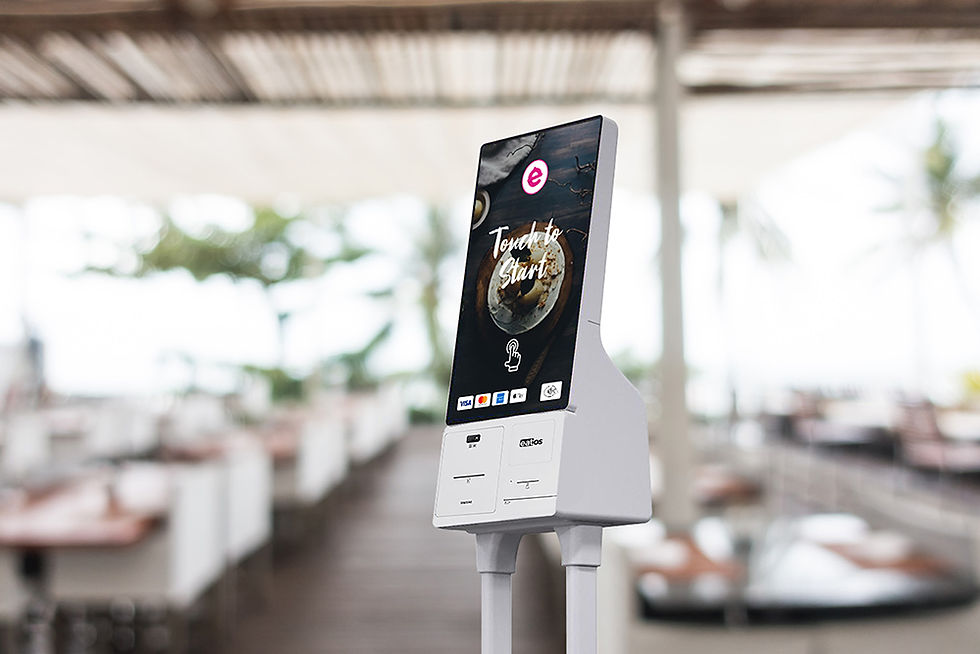
Self-service kiosks are automated machines that enable people to quickly and conveniently make transactions with minimal human interaction. From booking a vacation to ordering takeout, self-service kiosks make nearly any task easy and efficient.
The way they work is simple. Guests approach the machine, select the service they need, enter personal information, and then complete the transaction with just a few taps or clicks on the screen. The system then processes the request and prints a receipt or verification form confirming the transaction. Thanks to the ease of use, accuracy, and speed of self-service kiosks, many guests prefer them over traditional task completion methods.
Explaining why self-service kiosks are becoming increasingly popular
Self-service kiosks are becoming increasingly popular because they offer convenience, flexibility, and cost savings. Kiosks can provide guests with quick access to information and services, freeing staff time for more complex tasks. They also give them more control over their experience, allowing users to browse products and make purchases without waiting in line for a typical retail checkout counter. Moreover, kiosks reduce staffing costs by automating specific manual processes, making them attractive investments for companies looking to improve efficiency and cut costs. Whether ordering food at a restaurant, checking in for a flight, or buying tickets for an event, self-service kiosks are an invaluable tool for any industry.
"It's a win-win for customers and businesses as self-service kiosks allow for more personal interaction and quicker service – Chris Anderson, Restaurateur.
Introducing the Benefits of Restaurants' Self-Service Kiosks
Restaurants increasingly turn to self-service kiosks to facilitate faster, smoother guest service. Here are six benefits that these kiosks offer:
1. Increased speed – Self-service kiosks can process orders quickly and accurately, reducing guest wait times.
2. Customized ordering – Guests can customize their orders to their specifications. This means fewer order mistakes, eliminating the need to reorder or remake dishes.
3. Increased efficiency – Self-service kiosks reduce the need for staff members to take orders and payments, freeing them up to focus on other tasks.
4. Accurate analytics – Accurate data is collected from self-service kiosks, giving restaurants better insights into guest buying behaviors.
5. Reduced costs – By eliminating the need for staff members to take orders, self-service kiosks help reduce restaurant labor costs.
6. Improved guest experience – Self-service kiosks offer a streamlined, efficient way for guests to order and pay, making their overall experience more pleasant.
Discuss the Potential Challenges of Implementing Self Service Kiosks

Self-service kiosks are an excellent way for restaurants to save money and time and increase dining satisfaction. However, there are potential challenges when implementing self-service kiosks.
One challenge is the cost. The hardware and software can be expensive initially and require regular updates to stay current with technology. That cost can deter smaller restaurants or those on a shoestring budget.
Another challenge is the learning curve. Not all guests may be comfortable using new technologies, which could lead to frustration. Restaurants must provide clear instructions and offer support when self-service kiosks are installed.
The final challenge is security. Security procedures must be in place with self-service kiosks to protect guest information. Without proper safeguards, sensitive data can be compromised, leading to serious security issues.
Proper planning and implementation can mitigate these challenges, leading to greater success using self-service kiosks.
The potential privacy concerns with self-service kiosks
With the rise of self-service kiosks in today's society, there has been an increase in data collection practices that many may find concerning. Many of these kiosks have cameras and sensors that track our movements and collect personal data such as credit card information or other personal identification details. While these measures are primarily designed to help provide a better guest experience, it is essential to understand how this data is being used and whether it could be used in ways you may not be comfortable with.
Considering the potential security risks associated with these kiosks is also essential. Self-service kiosks often require guests to input personal data, which can be vulnerable to hacking and theft. In addition, some kiosks may use facial recognition technology, which could lead to privacy concerns if your image is retained without your knowledge. Therefore, understanding how data collected from self-service kiosks will be securely stored is essential.
While self-service kiosks can be convenient and time-saving, weighing the potential risks and benefits before using them is essential. Be aware of the privacy issues of self-service kiosks, and make sure your personal information is kept safe.
Conclusion
Self-service kiosks offer a valuable solution to improving the guest experience in restaurants of all sizes. They streamline the guest journey, reduce wait times, and offer convenience and ease of use. They can provide a one-stop shop experience with user-friendly design and intuitive interfaces. Investing in kiosk technology can save time while allowing restaurants to focus on delivering further value through improved guest satisfaction and loyalty. Contact us today to schedule a product demonstration.






